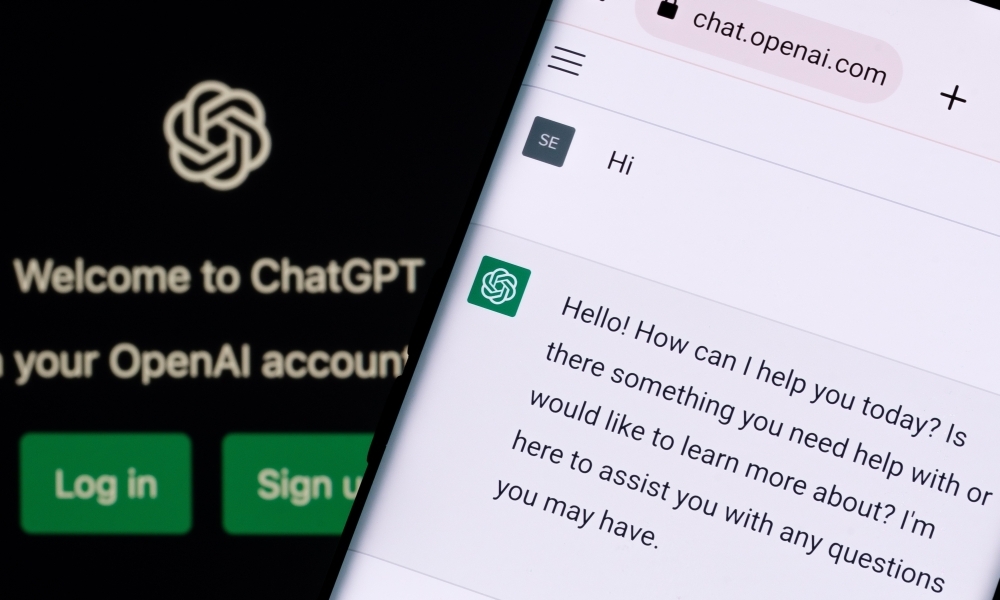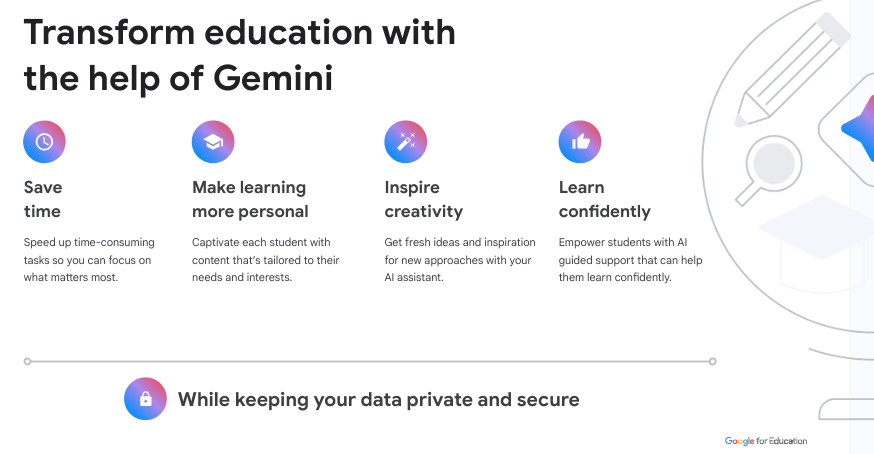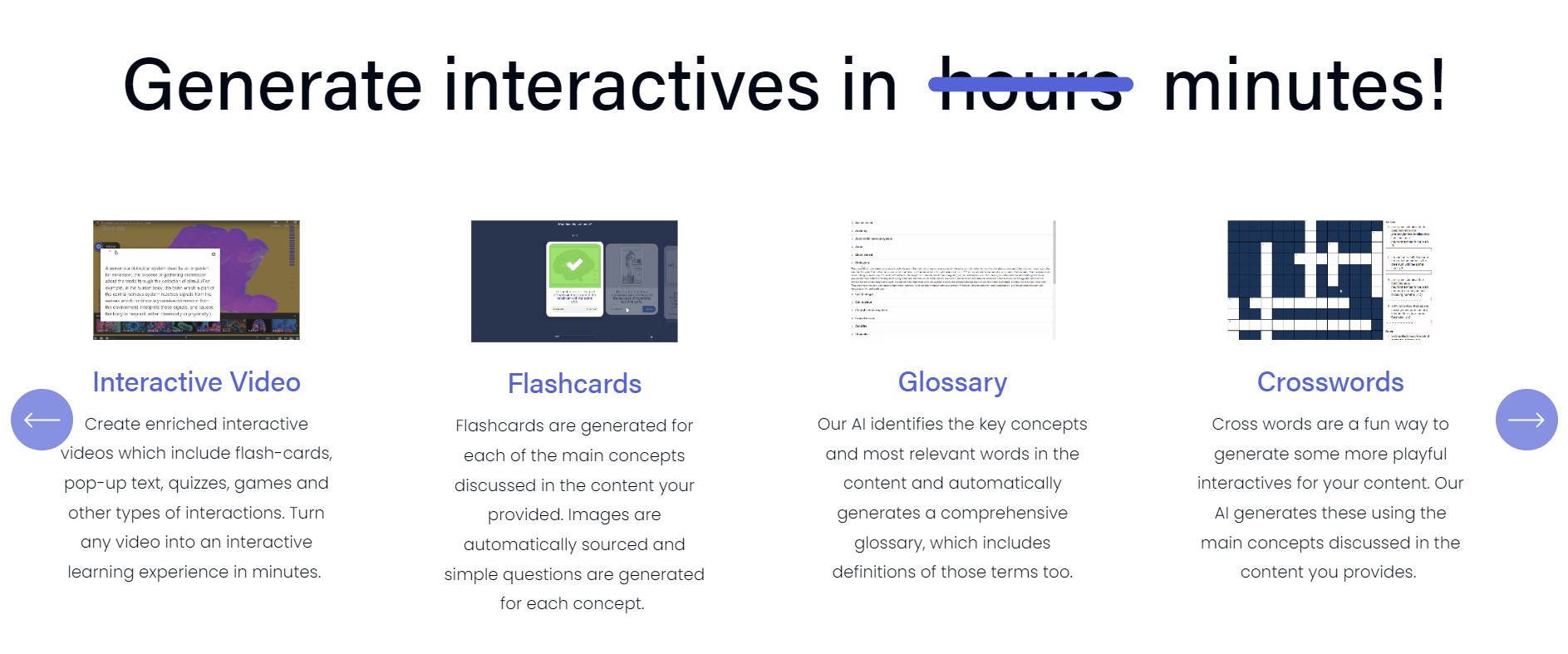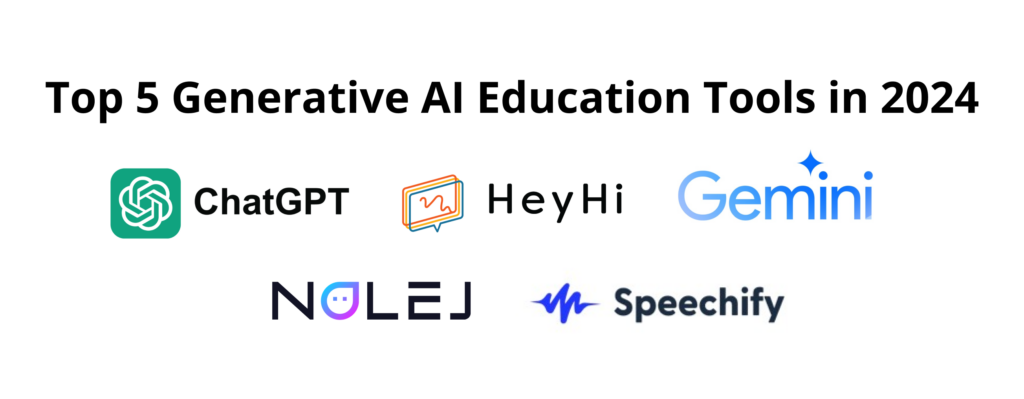In 2024, the landscape of education has been dramatically transformed by generative AI tools. These innovations are revolutionising classrooms, empowering educators, and enhancing student learning experiences. This article will explore the top five generative AI education tools, highlighting their unique features and benefits.
1. Chat GPT

The most famous generative AI application is Chat GPT, developed by OpenAI and backed by Microsoft. This chatbot uses a large language model to generate human-like responses from text prompts, making it a powerful tool for educational assistance.
Key Features
- Natural Language Processing: Understands and responds to queries in a human-like manner.
- Personalised Learning: Provides tailored content based on individual learning needs.
- 24/7 Availability: Offers round-the-clock assistance to students.
Drawbacks
- Accuracy Issues: Sometimes, the responses may not be entirely accurate.
- Dependency: Students might rely too much on the AI for answers.
Applications in Education
- Homework Assistance: Helps students with their assignments by providing explanations and answers.
- Tutoring: Acts as a virtual tutor, guiding students through complex topics.
- Content Generation: Assists teachers in creating lesson plans and educational materials.
Read More: Generative AI in Redefining the Classroom Experience
2. Gemini

Gemini, developed by Google’s AI research labs DeepMind and Google Research, is a next-gen generative AI model family. All Gemini models are natively multimodal, meaning they can work with audio, images, and videos, and were trained on diverse data sets, including codebases and text in various languages.
Key Features
- Interactive Learning: Engages students through interactive lessons.
- Data-Driven Insights: Provides valuable insights into student performance.
- Adaptive Learning: Adjusts the difficulty level based on student progress.
Drawbacks
- Cost: It can be expensive for some educational institutions.
- Technical Requirements: Requires robust IT infrastructure.
Applications in Education
- Personalised Learning Paths: Creates customised learning paths for each student.
- Real-Time Feedback: Offers immediate feedback to students, helping them improve.
- Resource Allocation: Helps teachers allocate resources effectively based on student needs.
3. HeyHi

HeyHi is an AI-powered teaching and learning system that utilises Generative AI. It empowers educators, schools, and education institutions to enable personalised adaptive learning that improve student learning outcomes. With HeyHi, educators can offer holistic education of both foundational academic learning and essential skills development (such as 21st Century Competencies, SEL, etc).
Key Features
- Personalised Adaptive Worksheets: Creates worksheets that are tailored and adaptive to each learner’s needs.
- Auto-marking & Smart Essay Marking: Automates grading to save teachers’ time.
- Performance Tracking: Tracks student performance and identifies learning gaps.
- AI Learning Buddy: Provides 24/7 adaptive feedback for self-directed and conversational learning.
- All-in-One Platform: Manages content, learning, and performance in one place.
- High Content Flexibility: Serve ready-to-use content and allow both private and contents from content partners.
Want to try and reap the benefits? Get in touch with us here.
Applications in Education
- Assessment Efficiency: Boosts assessment efficiency and effectiveness with Generative AI question and worksheet generator.
- Personalised Learning Materials: Craft personalised lesson modules in e-book and video formats.
- 24/7 Student Support: Offers continuous support for students with the AI Learning Buddy.
- Personalised Learning Path: Creates a unique learning path for each student.
- Learner Profiling: Track and profile learners better using advanced data analytics from varied data sources (text, audio, video).
Read More: iLearning: Achieving Learning Transparency and Personalised Education with AI
4. Nolej

Nolej AI, their flagship product, is an AI-powered tool that empowers educators to swiftly create interactive learning modules such as quizzes, flashcards, games, and interactive videos. Tailored for e-learning in both traditional and online classrooms, Nolej AI is designed to complement teachers’ efforts.
Key Features
- Content Creation: Generates educational content quickly.
- Engagement Tools: AI is used to keep students engaged with interactive content.
- Data Analytics: Provides detailed analytics on student performance.
Drawbacks
- Learning Curve: It may be challenging for some educators to use initially.
- Cost: It might be costly for smaller institutions.
Applications in Education
- Content Generation: Helps teachers create content more efficiently.
- Student Engagement: Keeps students engaged with interactive and adaptive learning materials.
- Performance Analysis: Analyses student performance to help teachers tailor their instruction.
5. Speechify

Speechify stands out as an exceptional platform for text-to-video creation, harnessing the capabilities of artificial intelligence (AI) for producing high-quality and engaging videos. With Speechify, educators can create AI-generated videos, convert text to speech using AI avatars, and leverage generative AI algorithms for impactful educational content.
Key Features
- Text-to-Speech: Converts text into natural-sounding speech.
- Multilingual Support: Supports multiple languages for diverse learning needs.
- Customisable Voice Options: Offers various voice options to suit different preferences.
Drawbacks
- Voice Quality: Some users may find the voice quality less natural.
- Subscription Costs: A subscription is required for full features.
Applications in Education
- Accessibility: Helps students with reading difficulties by converting text to speech.
- Language Learning: Aids in learning new languages through audio content.
- Content Consumption: Allows students to consume content in audio format, making learning more flexible.
Conclusion
Which generative AI tool have you tried, and which one is your favourite? These innovative tools are reshaping education by providing personalised learning, automating tasks, and boosting student engagement. ChatGPT, Gemini, HeyHi, NOLEJ, and Speechify stand out as leaders in 2024, each offering distinct features to meet diverse educational requirements, ultimately making the learning experience more effective and enjoyable.

HeyHi empowers schools and education institutions to enable personalised adaptive learning with a robust AI-powered e-assessment and learning system. We allow schools to offer holistic education, encompassing both foundational academic learning and 21st Century Competencies development. Create adaptive worksheets and lesson modules, automate grading, track performance & identify learning gaps, all with just a few clicks. Accelerate students’ learning with 24/7 adaptive feedback from our AI Learning Buddy. Flexible content options and seamless integration ensure efficiency, saving you valuable hours and costs.
Website: heyhi.sg
LinkedIn: linkedin.com/company/heyhilearningspace/
Facebook: facebook.com/HeyHiLearningSpace
Instagram: instagram.com/heyhilearningspace/
